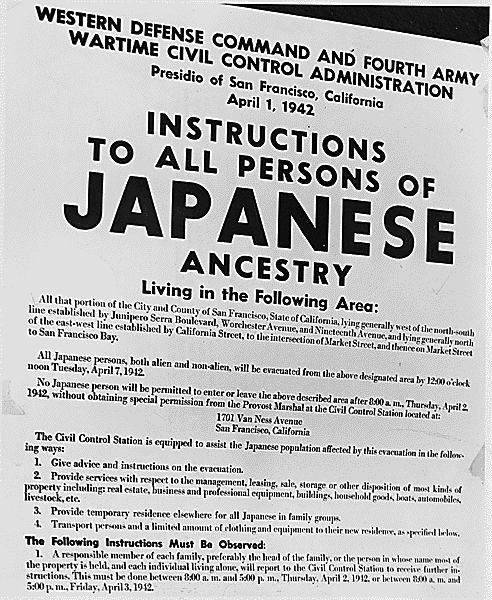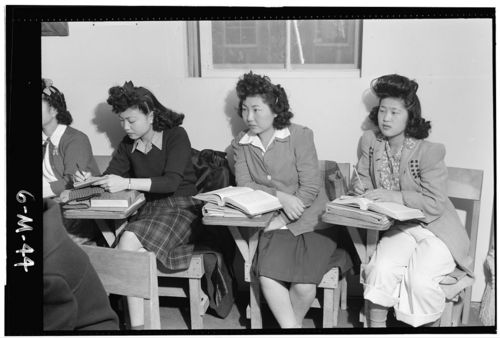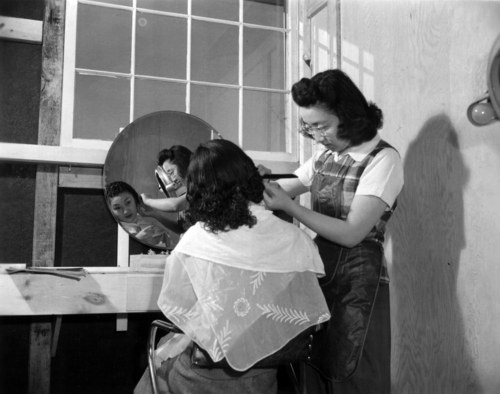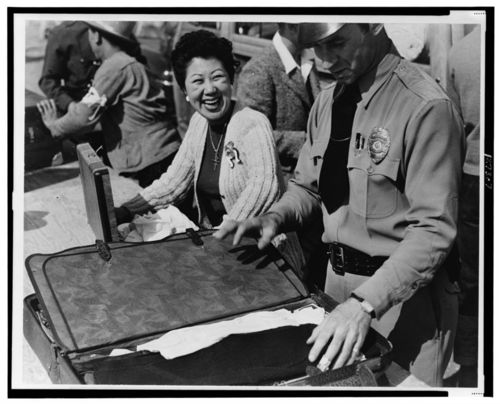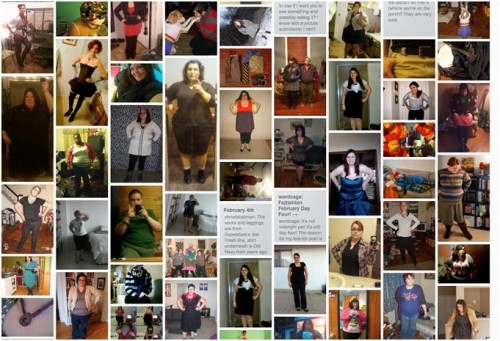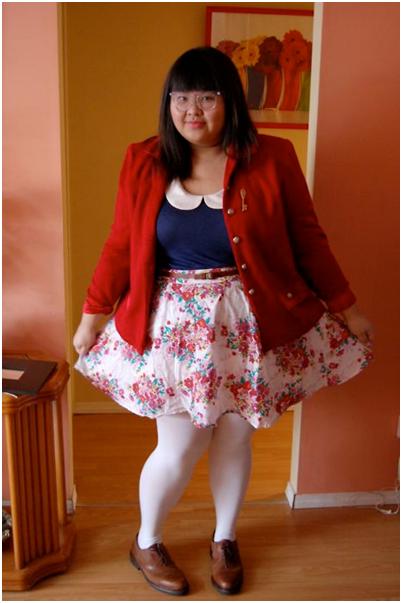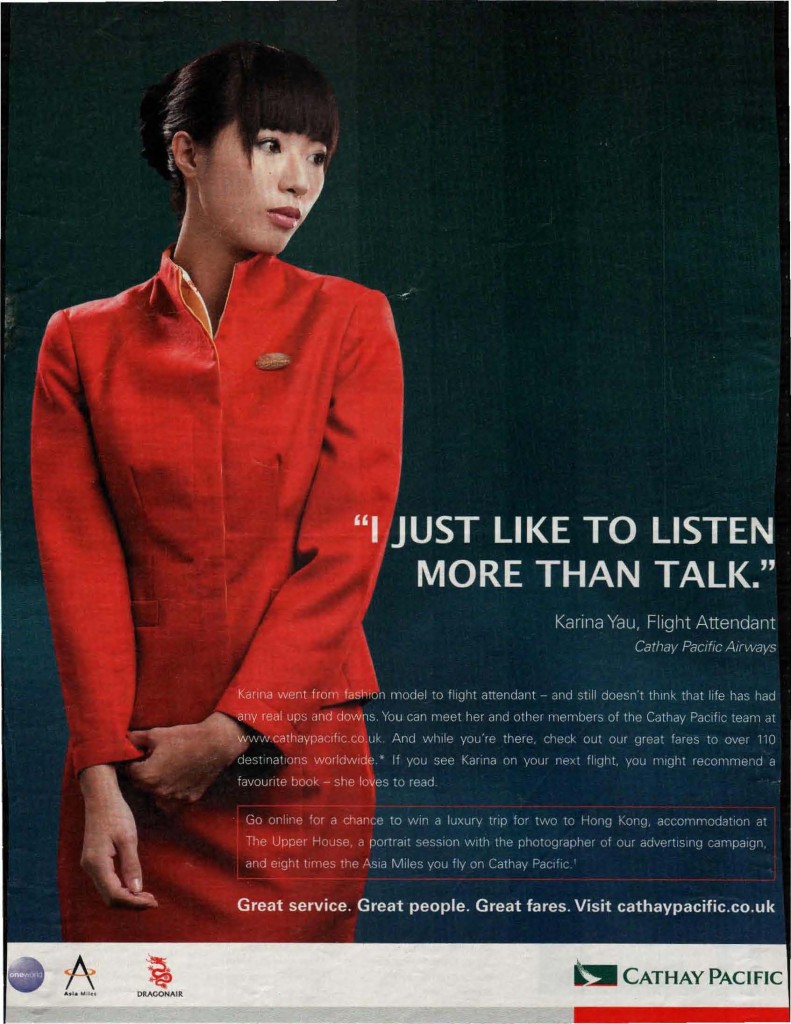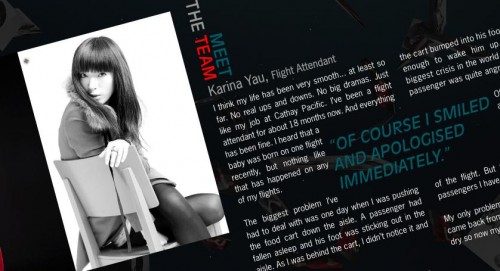The blog Of Another Fashion, by Minh-Ha T. Pham, serves as “an alternative archive of the not-quite-hidden but too often ignored fashion histories of U.S. women of color.” The collection includes images taken from public sources as well as photos sent in by readers and provides a contrast to fashion exhibits that usually present fashion trends as almost entirely White experiences.
While the collection is fascinating overall and definitely worth a look, I was particularly struck by the photos of life among Japanese Americans forced to live in internment camps during World War II.
A legal notice requiring Japanese Americans on the West Coast to relocate voluntarily to internment camps or face arrest:
Women playing volleyball:
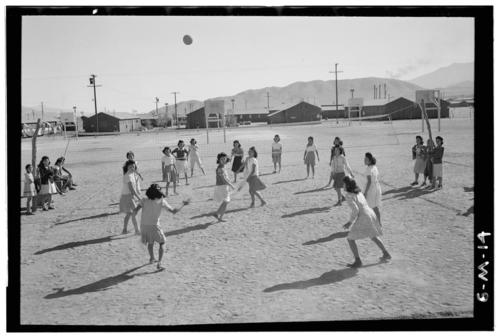 (Library of Congress. Photo by Ansel Adams.)
(Library of Congress. Photo by Ansel Adams.)
Walking to school at the Manzanar camp:
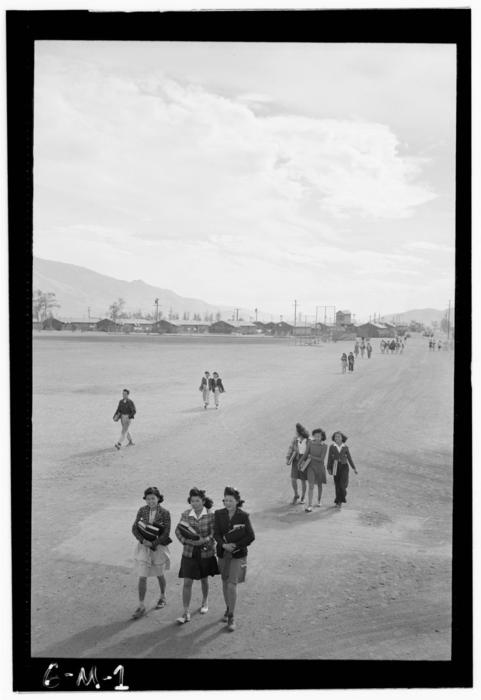 (Library of Congress. Photo by Ansel Adams.)
(Library of Congress. Photo by Ansel Adams.)
Women in biology and dressmaking classes:
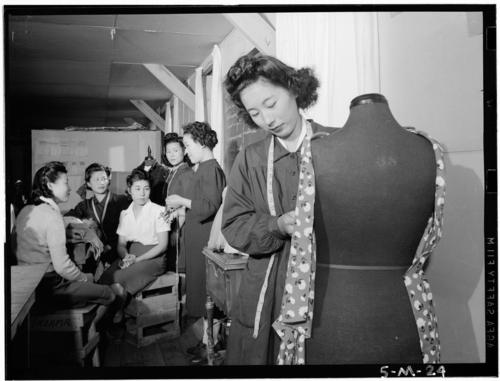 (Both images by Ansel Adams, 1943; Library of Congress.)
(Both images by Ansel Adams, 1943; Library of Congress.)
One camp’s version of a beauty salon:
Intake processing at the Santa Anita center:
(From the Library of Congress’ Farm Security Administration and Office of War Information Collection (April 1942). Photographer unknown.)
Pham discusses the fact that in many of the photos of the processing centers, the women are smiling and look very happy, despite going through what had to be an upsetting, frightening, and humiliating experience. Japanese Americans were not allowed to bring their own cameras into the camps; the photos were taken by others, including Dorothea Lange and Ansel Adams. And they found their subjects didn’t always cooperate with the images they were planning to provide of the camps:
According to Sue Kunitomi Embrey the chair of the Manzanar Committee, Adams hoped to capture the despair of camp life in order to stir some public sympathy for Japanese Americans but was frustrated by all the primping and posing Japanese Americans did when he was photographing.
…
…I hope that images of smiling and fashion-conscious Japanese American women…adds to and deepens our appreciation of the small acts of feeling, creativity, and resistance that happen everyday in spite of huge limitations. In an act as seemingly trivial and trite as smiling for the camera, these women interrupt and take some control of the historical, political, and visual frames through which they’re being viewed.

